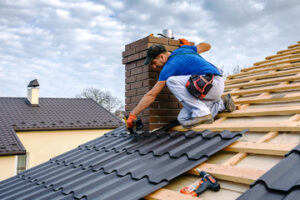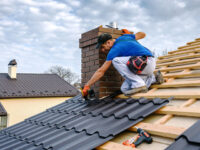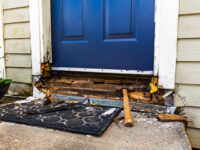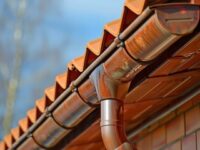How to Minimize Roof Repair Costs
Roofs take a beating from harsh weather and tree branches. The best way to minimize damage is to conduct regular inspections and promptly repair any issues.

Small, localized problems like a leak in one area or some missing shingles can often be repaired without replacing the entire roof. However, waiting can result in more extensive damage and higher costs. Keep reading the article below to learn more about Roof Repair.
A cracked roof tile or rusty flashing may seem minor, but they often point to bigger problems. Ignoring cracks and gaps invites moisture into the rafters or decking, leading to rot or mould growth. Water seepage also ruins insulation and damages ceilings, requiring costly repair. Small repairs cost far less than a new roof, so it’s worth addressing any signs of trouble, even if they are only cosmetic.
Water stains or discoloration on ceilings or walls are a sure sign of leaks. Other signs of leaking include dark spots on the attic floor or ceiling, or musty smells in your home. Water damage weakens rafters, causing sagging or bowed walls and ceilings, which threaten structural integrity. Addressing this early prevents water from spreading further and causing more expensive damage.
Using a ladder and appropriate safety precautions, examine the ridge tiles for loose or missing pieces. Loose ridge tiles leave the roof vulnerable to moisture damage, so replacing them is an essential part of any roof repair. Ensure that the replacement tiles match in style and color to your existing ones, then secure them with roofing cement or mastic.
Examine the flashing around chimneys, vents, and skylights for rust or gaps that let water in. This is an especially critical spot because 90% of leaks begin at roof penetrations. If left unchecked, these leaks can corrode and undermine the integrity of the entire roof structure.
Use a checklist to make sure you inspect every section of the roof, including gutters and valleys, shingles, and seals around vents and chimneys. Taking photos of each problem area helps document the severity of the issue, so you can share them with a roofer. The photos can help professionals identify the urgency of the problem, so it’s important to capture both close-ups and wide shots. Consider adding time-stamps or labels to each photo to track progression of water damage. A well-documented inspection enables quick action to prevent more serious problems down the road.
Loose Shingles
If you see shingles lying on the ground, it’s a sure sign that your roof needs some attention. Loose shingles allow water to enter your home, which in turn creates other problems like mold growth and structural damage. It’s important to regularly check your roof and address loose shingles, especially after severe weather.
Unlike cracks and gaps, you can easily spot a loose shingle by looking for one that doesn’t align with the rest of your roof. You may also notice granule piles on the ground, which can indicate that your shingles are losing their strength and durability.
You can fix loose shingles by resealing them, replacing them, or just removing them and leaving the space empty. The best approach depends on the type of shingle you have and how much damage it has suffered. A professional will be able to determine the best solution for you.
Start by ensuring that you have enough materials to replace the damaged shingle. You should be able to pick up a replacement shingle at a home center or even your local hardware store. Also, ensure that you have the right ladder to climb on the roof. Wearing a safety harness is essential to prevent injury or death in the event of a fall. Once you’re on the roof, clear the debris and locate the problem shingle. Next, slip your pry bar underneath the shingle and lift it until you can see the nails. Once you have the shingle removed, apply roofing cement to the exposed area and fit the new shingle. Remember to cover any nail holes and reseal the shingle.
Repeat the process for any additional loose shingles on your roof. A little maintenance now can prevent expensive damage to your roof down the road. Regular maintenance also helps keep the integrity of your roof intact for a longer period of time. It also helps sidestep potential problems like leaks and reduces your energy bills. Lastly, it prevents pests from making a home in your attic or the other rooms in your house.
Broken Shingles
When shingles are broken, the barrier coatings that protect your home from water and sun damage are compromised. This can lead to leaks and other more serious issues, so it’s important to have broken shingles replaced promptly.
A variety of factors can contribute to shingle damage, including weather exposure, age, and improper installation. The natural aging process can also cause shingles to loosen, which increases their vulnerability to damage and wear.
In addition, high temperatures, cold snaps, and windy conditions can accelerate shingle deterioration. Improper installation, including improper overlap and use of sealants, can also cause shingles to degrade prematurely. If you’re concerned about your shingles, take the time to perform a thorough roof inspection and address minor issues immediately.
While a damaged shingle may not be easy to spot, other indicators of trouble include interior water stains and leaks. If you notice any of these issues, it’s a good idea to contact a professional roofer for a more comprehensive inspection and roof repair.
Missing shingles are another common roofing problem that needs to be addressed promptly. Whether they’re pulled off by strong winds or simply worn out, these gaps in your roof’s surface can allow moisture to penetrate your home, leading to rot and further damage.
Curling or buckling shingles can also indicate that your roof is in need of attention. This type of shingle damage is typically caused by extreme heat, poor installation, or excessive aging, and can leave your roof vulnerable to moisture penetration.
A qualified roofing contractor can replace missing shingles with new ones of the same style and color, ensuring a seamless appearance. They can also repair cracked shingles with roofing sealant, which helps prevent water penetration and minimize future damage. In addition, a roofing contractor can inspect the flashing around chimneys, vents, and skylights to ensure that it’s free from cracks and damage. Keeping gutters and downspouts clean can also help prevent water buildup and promote shingle longevity.
Leaks
A leaking roof is a major problem that requires immediate repair. Even a single leak can lead to water damage, mold growth, and musty odors. While you may be able to repair a minor leak on your own, it is always best to work with a professional roofing contractor. These contractors can also perform a full inspection and make any necessary repairs to protect your home from further damage.
Leaks are caused by a number of factors, including age, poor installation, and severe weather events. If you notice water stains on your ceiling or walls, you should immediately call a roofing contractor for a roof repair. A leaky roof can cause damage to the interior of your home, resulting in costly repair bills and structural damage.
One of the first things you should do when noticing a leak is to shut off the water supply. This can be done by closing valves, turning off water tanks, or shutting off the main water line. Once the water is turned off, you can then begin to assess the damage.
If you are able to access the attic, you should look for water marks on the ceiling and walls, water puddles in the attic, and any discoloration that may be from a leak. You can also trace the path of the water through your attic to find its source.
Leaks can also be caused by poorly installed flashing. This is usually due to shoddy construction or the use of standard caulking. The flashing is a metal strip that seals gaps between the roofing material and the walls or vents on the roof. If the flashing is not installed properly, it can corrode and break, causing a leak.
Another common cause of leaks is damaged or broken vents. These are usually installed on the roof to help with air circulation, but if they are damaged or missing, they can allow rainwater to infiltrate the structure.
While there are many DIY guides to repairing a roof leak, it is always best to leave these jobs to professionals, especially when dealing with severe leaks or shingles. Attempting to repair these issues can result in additional damage and may cost you more than it would have to hire a licensed roofing contractor.






